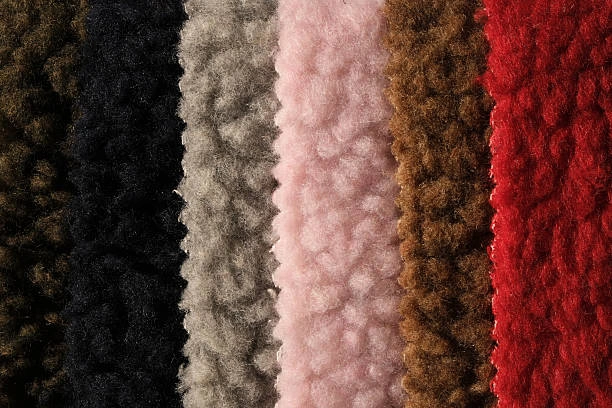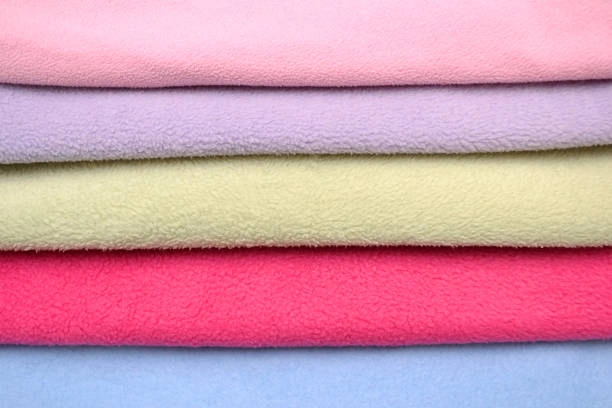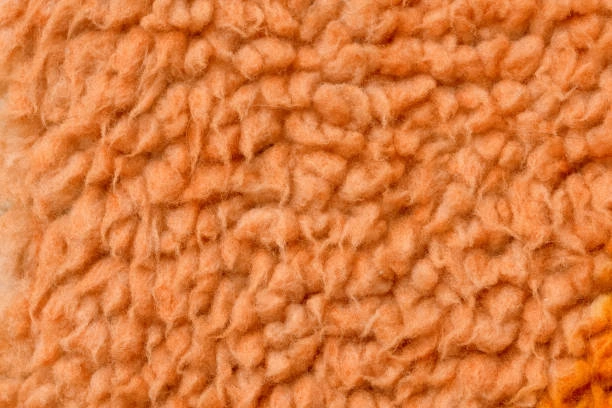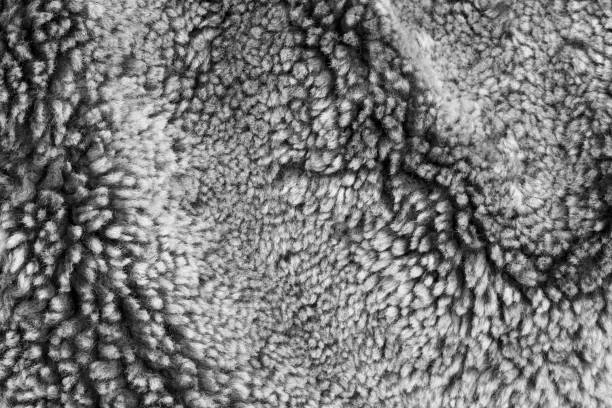Welcome to our exploration of Teddy Velvet Fabric textile that combines the plushness of a teddy bear’s fur with the sophistication of velvet. In this guide, we’ll dive into what makes this fabric unique, its key characteristics, and why it’s become a staple in fashion, home decor, and beyond. Whether you’re looking to update your wardrobe, revamp your living space, or simply satisfy your curiosity, we’ve got you covered.
What is Teddy Velvet Fabric

Teddy velvet fabric is a plush, soft textile inspired by the cozy, fuzzy texture of a teddy bear’s fur. It is defined by its high pile, long, dense fibers that create a luxurious, cuddly surface, making it a top choice for items that prioritize comfort and warmth. Typically crafted from synthetic materials like polyester, acrylic, or blends (sometimes with spandex for stretch), this fabric balances durability with a gentle, velvety feel that is inviting to the touch.
Key features include its ultra-soft texture, which offers a warm, comforting sensation, and its versatile aesthetic, available in neutral tones or rich colors to suit various styles. In home decor, teddy velvet is commonly used for sofas, armchairs, blankets, and pillows, adding texture and a cozy atmosphere to living spaces. In fashion, it shines in outerwear like teddy coats, loungewear sets, and accessories such as scarves and hats, blending timeless style with everyday comfort.
Practicality is another highlight: many teddy velvet fabrics are stain-resistant and easy to maintain. Gentle washing and regular brushing help keep the pile fluffy and prevent matting. Whether used to create a plush sofa for relaxing or a stylish jacket for chilly days, teddy velvet offers a perfect blend of luxury and functionality, making it a beloved material for anyone seeking softness and elegance in their surroundings or wardrobe.
Characteristics and Properties of Teddy Velvet

Teddy velvet fabric is a luxurious textile celebrated for its plush texture, warmth, and inviting aesthetic. Its defining features make it a versatile choice for both fashion and home decor, blending comfort with style. Let’s explore its key characteristics and properties in detail.
Texture and Feel
The most striking aspect of teddy velvet is its softness, often described as “cuddly,” “velvety,” or “gentle” to the touch. The fabric’s dense, raised pile creates a sumptuous surface that mimics the fur of a teddy bear, offering a tactile experience that’s both comforting and indulgent. This texture makes it ideal for items like blankets, pillows, and clothing, where close contact with the skin is desired. The fibers are designed to be gentle, even on sensitive skin, adding to their appeal for everyday use.
Pile Height
The term “high pile” refers to the length of the fibers standing vertically from the fabric’s base. Unlike shorter-pile textiles like velveteen or corduroy, teddy velvet’s longer fibers (typically 5–10 millimeters) create a 蓬松,cloud-like texture that enhances its visual depth and tactile richness. This height also contributes to the fabric’s ability to trap air, which in turn increases insulation and warmth. The pile’s density and length can vary, allowing for different levels of plushness—from ultra-thick, shaggy textures to slightly shorter, smoother finishes, depending on the intended use.
Composition (Common Fibers)
Teddy velvet is primarily made from synthetic fibers like polyester, acrylic, or blends of these materials. Polyester offers durability and resistance to pilling, making it suitable for high-traffic upholstery or frequently worn clothing. Acrylic, on the other hand, provides a softer, more natural feel similar to wool, while remaining lightweight and easy to care for. Some blends incorporate spandex for stretch, enhancing comfort in garments like jackets or loungewear. The choice of fiber affects the fabric’s overall performance: polyester-based teddy velvet tends to be more stain-resistant and long-lasting, while acrylic blends prioritize softness and warmth.
Warmth and Insulation
Thanks to its high pile and dense construction, teddy velvet excels at retaining heat. The raised fibers create tiny air pockets that act as insulators, making the fabric an excellent choice for cold-weather applications. In home decor, this property makes it perfect for blankets, throws, and upholstery, helping to keep spaces cozy during winter. In fashion, teddy coats and sweaters provide warmth without the bulk of traditional woolen garments, offering both style and functionality.
Durability and Maintenance
Teddy velvet is designed to withstand regular use when cared for properly. Polyester blends, in particular, are known for their resilience and resistance to wear and tear. However, the fabric’s plush pile can flatten over time if subjected to heavy pressure or friction. To maintain its texture, regular gentle brushing (using a soft-bristled brush or lint roller) is recommended to lift the fibers and prevent matting. For cleaning, spot treatment with a mild detergent and cold water is best for spills, while machine washing (on a delicate cycle) or hand washing is suitable for smaller items. Always air dry to avoid shrinkage or damage to the pile. Avoid direct sunlight and high heat, as these can cause fading or stiffening of the fabric.
In summary, teddy velvet’s combination of softness, warmth, and durability makes it a standout choice for those seeking comfort and luxury in their textiles. Whether used in a cozy armchair, a stylish jacket, or a plush throw, this fabric effortlessly balances practicality with elegance, ensuring it remains a timeless favorite.
What’s the Difference Between Velvet and Crushed Velvet?

Velvet and crushed velvet are both plush fabrics with soft textures but differ in appearance, texture, and production, making them suitable for distinct uses. Velvet is a classic fabric with a smooth, uniform pile created by a double-layer weaving process where the layers are cut to form short, upright fibers that lie evenly, resulting in a luxurious, flat surface with a subtle, consistent sheen. It feels soft, smooth, and plush against the skin, ideal for elegant applications like formal clothing (evening gowns, blazers), upscale upholstery, or sophisticated home decor such as velvet curtains or plush pillows.
In contrast, crushed velvet starts as regular velvet but undergoes a process where the pile is intentionally compressed or “crushed” using heat, pressure, or rolling, causing fibers to lie in different directions and creating a textured, irregular surface with visible wrinkles and a patchwork of light and dark areas due to varying fiber angles. This gives it a rugged, tactile look with a vintage or edgy vibe, as the crushed areas may feel slightly stiffer while uncrushed parts remain soft. Crushed velvet is popular for fashion-forward pieces like jackets, skirts, or accessories, as well as bohemian or eclectic decor such as throws or cushions, where its unique, dynamic texture adds visual depth and interest.
In terms of care, velvet requires gentle handling to preserve its uniform pile—avoiding rubbing, using soft brushes, and preferring dry cleaning—while crushed velvet is more forgiving, as its textured surface hides minor imperfections and is less prone to showing wear, though it still benefits from gentle cleaning to maintain its crushed pattern. Ultimately, velvet offers timeless elegance and smooth luxury, while crushed velvet provides a modern, tactile twist with a distinct, eye-catching aesthetic, making the choice between them a matter of style and desired texture.
Common Uses of Teddy Velvet Fabric
Teddy velvet fabric, known for its plush texture, warmth, and inviting softness, has gained popularity across various fields, seamlessly combining comfort with style in both functional and decorative applications. Its dense, high pile and cozy feel make it a versatile material for creating items that prioritize tactile luxury and visual appeal. Here are some of its most common uses:
In home decor, teddy velvet excels at transforming living spaces into comfortable, elegant environments. It is frequently used for upholstery on sofas, armchairs, and ottomans, where its durable yet soft surface encourages relaxation while adding a touch of sophistication. The fabric’s ability to trap air makes it ideal for throws and blankets, perfect for staying warm on cold nights or adding texture to a bed or couch. Teddy velvet pillows are also a popular choice, as their plush texture contrasts nicely with smoother fabrics like linen or cotton, enhancing the visual depth of a room. In bedrooms, teddy velvet headboards create a luxurious focal point, offering both style and comfort for leaning back to read or unwind.
In fashion and apparel, teddy velvet is a key material for creating garments that blend warmth with contemporary design. Teddy coats and jackets, with their oversized, fuzzy silhouettes, have become winter essentials, providing a stylish and cozy alternative to heavier outerwear. Loungewear sets made from teddy velvet offer supreme comfort for at-home relaxation or casual outings, combining softness with a laid-back, chic aesthetic. The fabric also appears in accessories such as scarves, hats, and handbags, adding a touch of plush sophistication to any outfit. Its gentle texture makes it suitable for children’s clothing too, such as cozy sweaters or cute outerwear pieces that prioritize both comfort and style.
Teddy velvet is a favorite in DIY and crafting projects due to its ease of use and decorative appeal. Crafters utilize it to make plush toys, custom throw pillow covers, or even wall hangings, taking advantage of its softness to create items that are both tactile and visually appealing. It is a popular choice for pet beds and accessories, as pets are drawn to the cozy surface, and the fabric’s durability can withstand daily use and occasional washing. Additionally, teddy velvet can be incorporated into seasonal decor, such as festive pillows or holiday-themed crafts, adding a warm, inviting touch to any project.
The fabric’s adaptability across these uses stems from its unique blend of softness, warmth, and practicality. Whether used to craft a statement piece of furniture, a trendy jacket, or a handmade gift, teddy velvet brings a sense of luxury and comfort that caters to both functional and aesthetic needs. Its enduring popularity lies in its ability to elevate everyday items with a touch of plush elegance, making it a beloved material for anyone looking to infuse their life with softness and style.
What is the Cheap Version of Velvet?

Velour is a plush textile celebrated for its remarkable softness, offering a luxurious feel at a more affordable price compared to velvet. Its defining feature is the short, cut fibers that create a smooth, velvety surface, conforming to the touch and offering a tactile experience similar to running your hand through fine fur. The fabric drapes gracefully, making it a versatile choice for clothing, upholstery, and home decor. With its blend of comfort and affordability, velour brings a touch of elegance to everyday items, from cozy bathrobes to stylish cushions, without the premium cost of traditional velvet.
Conclusion
In short, velvet is the classic choice for elegance and uniformity, while crushed velvet offers a modern, textured twist with a vintage vibe. Your choice depends on the look and feel you want: opt for velvet when you need sophistication and smoothness, or crushed velvet for a bold, tactile, and eye-catching aesthetic. Both fabrics bring luxury to any project, but their distinct personalities make them suited for different styles and uses.
